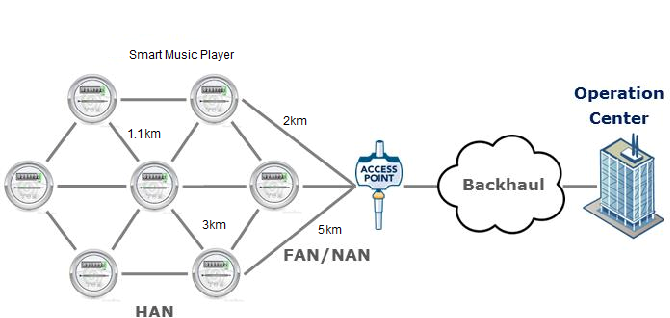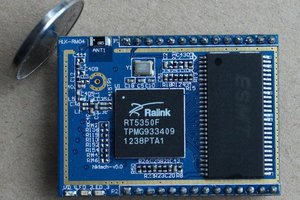Introduction:
LoRa, an emerging wireless technology, is examined for long range communication performance in a large area. Although LoRa shows good performance for long-distance transmission in the countryside, its radio signals can be attenuated and interfered with by buildings, trees and other signal sources. In urban areas, our observation shows that LoRa requires a dense deployment of LoRa gateways to ensure that indoor LoRa devices can transfer data back to remote servers.
LoRa mesh network that attempts to talk to all other nodes in the mesh. Each node sends its routing information to every other node. The process of sending data and receiving acknowledgements lets a node determine which nodes it can successfully communicate with directly. Mesh networking is a solution for increasing the communication range and packet delivery ratio without the need to install additional LoRa gateways. This study presents our design of a LoRa mesh-networking module for IoT applications (e.g.,collecting data from multiple, widely distributed sensors on a university campus).This is how each Music player node builds up it's routing table. You must set N_NODES to the max number of nodes in mesh music player.

Keyword: Mesh Network, LoRa, Long range communication, Music Player, oT solutions, smart grid, smart meter, lT service referral program, freeRTOS, technology solutions
SCADA solutions, Network monitoring, logistics robots, Engineering solutions referral program, embedded C++, embedded C, Engineering solutions, Network management.
Features:
- This music player automatic synchronizes the media files from another music player.
- Music player transfer and receive file very long distance up to 10 km.
- Music player also play music via Bluetooth.
- Each communication has multiple handshake confirmation, to ensure the stability of the data.
Hardware Requirement: EFB-REV1 development board, MP3 module, SD Card module
Implementation:
Here we used 32-bit LX6 microprocessor development board which come with inbuild LoRa connectivity. For making a music player we need to attached MP3 and SD card module to this development board.
Nodes are programmed with software that tells them how to interact within the larger network. Information travels across the network from point A to point B by hopping wirelessly from one mesh node to the next. The nodes automatically choose the quickest and safest path in a process known as dynamic routing.
The biggest advantage of wireless mesh networks -- as opposed to wired or fixed wireless networks is that they are truly wireless. Most traditional "wireless" access points still need to be wired to the Internet to broadcast their signal. For large wireless networks, Ethernet cables need to be buried in ceilings and walls and throughout public areas.
In a wireless mesh network, only one node needs to be physically wired to a network connection like a DSL Internet modem. That one wired node then shares its Internet connection wirelessly with all other nodes in its vicinity. Those nodes then share the connection wirelessly with the nodes closest to them. The more nodes, the further the connection spreads, creating a wireless "cloud of connectivity" that can serve a small office or a city of millions.
Firmware the LoRa mesh music player firmware divided in two-part
- LoRa Mesh Communication Protocol: This section handles the file transfer as well as long range LoRa device connectivity pairing and Sending, receiving audio file through the Mesh loRa mesh network.
- Music Play: This section handles to play the music files from SD card
Conclusion:
Wireless mesh networks, an emerging technology, may bring the dream of a seamlessly connected world into reality.
Wireless mesh networks can easily, effectively and wirelessly connect entire cities using inexpensive, existing technology. Traditional networks rely on a small number of wired access points or wireless...
Read more » ssla-couk
ssla-couk
 Martin
Martin
 Peter
Peter

 Samuk
Samuk